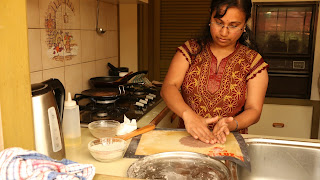The old Greek proverb
Life is bitter, death is sweet can be summed up in two traditional dishes; Horta and Melemakarona.
In an earlier post I mention the influence of Michelle when developing this project, through a story of her aunts picking edible weeds around Melbourne, referring to their book on edible and medicinal plants brought from Greece.
For me, this was a reminder of the ancient symbiotic relationship between edible plants, people and migration repeated so often over many millennia to form agricultural systems and plant hybridisation practices. Edible weeds are everywhere, among first respondents to human impact on land by usually growing where soil is freshly disturbed, mostly in urban or agricultural environments.
Hence the definition of a weed;
a wild plant growing where it is not wanted and in competition with cultivated plants.
It's well understood and documented that waves of human migration have given Melbourne incredibly diverse food habits and access to global foodways, with the largest population coming from Greece. Throughout the year Michelle and I have cooked Greek dishes evocative of her childhood in Melbourne and her family stories of life on a Greek Island.
A meal of Horta and Youvoulkia (Greek Lamb Meatballs)
Michelle says her father's family were poor, eating Horta from leaves grown and foraged for breakfast, lunch and dinner, with meals of stolen lamb eaten secretly in dead of night. Horta is said to be prized by the elderly who drink the Horta water, which makes sense because that's where most of the nutrition would be after boiling the bitterness out of the foraged greens. For one cooking session we made Horta and Youvoulkia (above), but the dish we decided to focus
on for this project however was Melemakarona - Honey Biscuits because of their association to ritual and similarity the Ancient Greek Ritual Honey Cake.
First attempt at Melemakarona made traditional style.
In context with food anthropology the symbolism for Melemakarona can be seen in the main ingredients of honey and wheat. They carrying life and death
connotations, in the context of funeral and/or memorial wheat (Koliva) and honey as a symbol of fertility and well being.
They're Michelle's childhood favorite and we decided to improvise with a modern
Greek version, playing further with ingredients and shape. As pointed out by
Michelle, our modifications meant they're not Melemakarona because of the altered shape and use of gluten free flours for extra flavour and a shorter (softer) crumb the experience of texture when eating them was significantly different. This was an interesting point because ritual use of food is based on sensory information in context with an associated event/activity that together stimulate strong and evocative memory. If a recipe changes, so does the pathway to the information and memory recall is not the same.
Connections happen when cooking and eating with people because it's a type of language that gets translated through consumption as a meal, that can lead to deeper engagement with community and/or individuals, or miss the mark completely.
After learning to cook Horta with Michelle I showed it to Martin in addition to his existing use of forage plants, as a tasty dish he might be able to share with his family now and then rather than always eat different food to them. Since his strict diet discounts sugars and carbohydrates he is unable to eat honey his bees produce, in turn used to cook Honey Biscuits with Michelle.
Thanks for reading, more soon.























